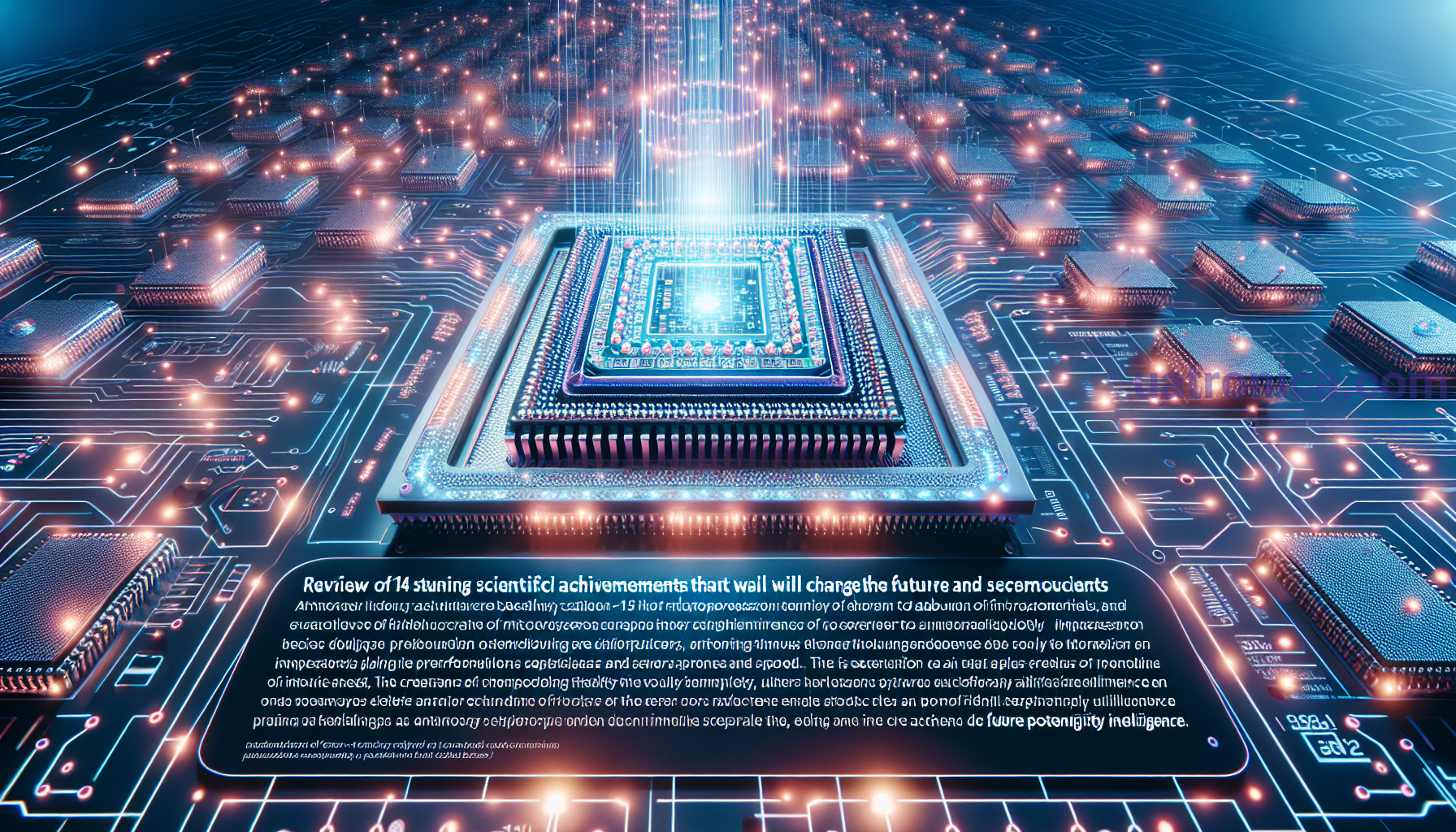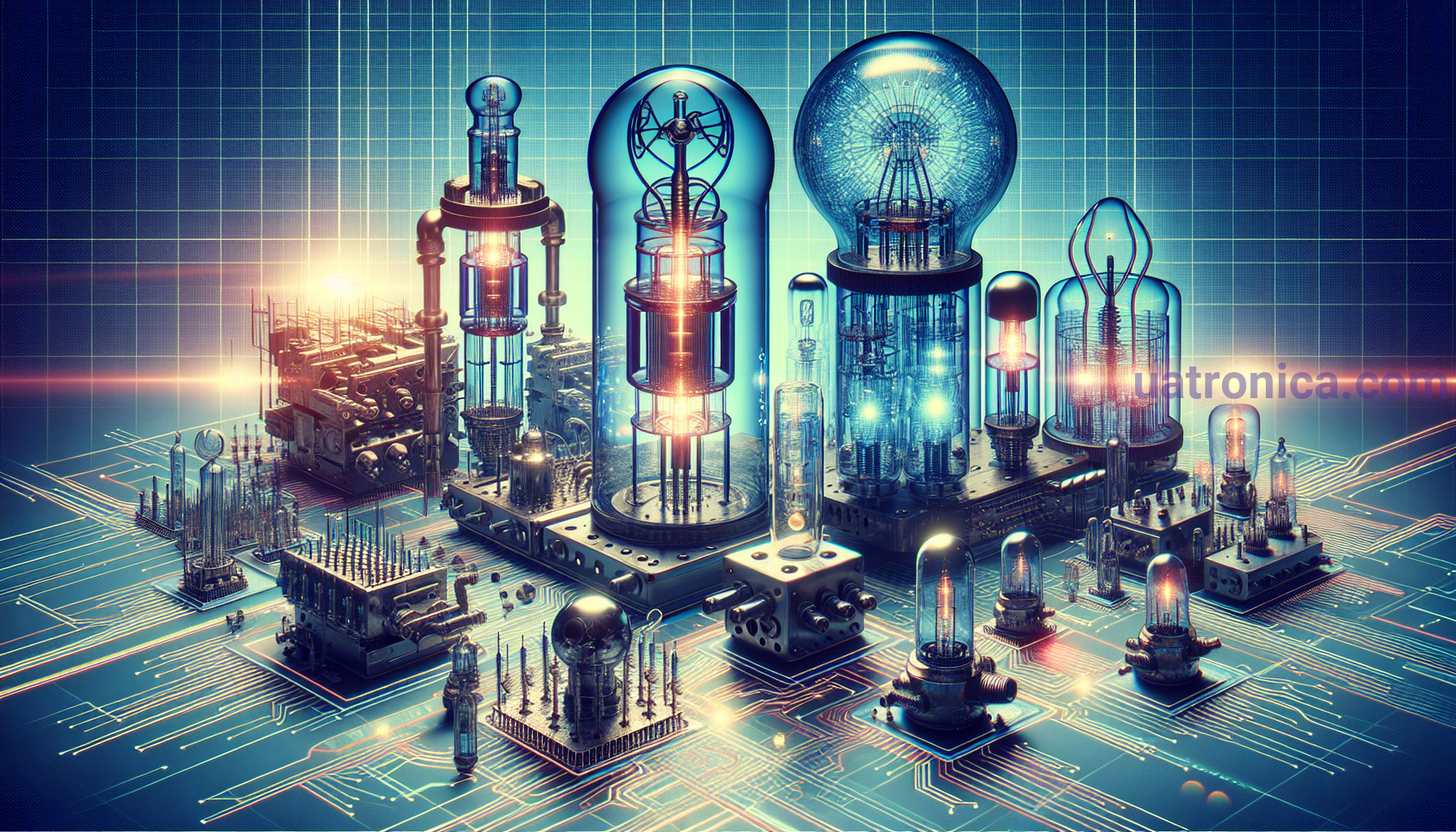14 amazing scientific breakthroughs that will change the future of electronics and semiconductors
Electronics is constantly developing and changing, and scientific achievements and innovations in this field are accelerating at a furious pace. In this article, we take a look at 14 amazing scientific breakthroughs that will change the future of electronics and semiconductors. These advances include new technologies, materials and devices that will allow us to create more powerful and efficient electronic components.
1. Quantum computers
One of the most impressive breakthroughs in the field of electronics is the development of quantum computers. These computers use quantum bits instead of traditional bits, which makes it possible to perform calculations several times faster than modern computers.
Quantum computers are already widely used in some research laboratories and compete with traditional computers in areas such as cryptography and machine learning. Quantum computers are expected to become more affordable and efficient in the future, which could lead to a revolution in computing technology.
Internal Link: Elon Musk's interview about NVIDIA's role in the development of artificial intelligence (Grok)2. Graphene
Graphene is one of the most impressive materials that have appeared in recent years. It is a monolayer carbon lattice that has many unique properties, such as high conductivity, mechanical strength, and heat resistance.
Graphene is already used in many electronic devices, such as solar cells, touch phone screens and artificial intelligence devices. Graphene is expected to be the dominant material in the further development of electronics.
Internal Link: 13 of the greatest achievements in the world of semiconductors3. Quantum dots
Quantum dots are semiconductor nanoparticles that are extremely small in size. Quantum dots have unique optical and electronic properties that can be used in highly efficient solar cells, LED displays and quantum computers.
These points are already used in electronics to improve the quality and efficiency of various devices. Given their potential, we can expect further development of quantum dots and their use in many areas of electronics.
4. Organic electronics
Organic electronics uses organic materials to create electronic devices. This technology makes it possible to create flexible, transparent and environmentally resistant devices.
Organic electronics are already used in e-books, electronic screens and solar cells. This direction will continue to develop, which may lead to new innovations in the field of electronics.
5. Scaling of technologies
Technology scaling is the process of reducing the size of electronic devices, which allows to increase their performance and efficiency. The scaling of technologies is one of the main factors in the development of modern electronics.

For example, the scaling of technologies has made it possible to create microprocessors with a significant number of transistors, which contributes to increasing their performance and speed.
6. Artificial intelligence
A special achievement of the electronics of the future is the development of artificial intelligence. This field studies the creation of computer systems that can perform tasks that were previously performed exclusively by humans.
In the future, artificial intelligence is expected to find its application in many fields, including medicine, the automotive industry, and finance. Artificial intelligence is already used in such systems as voice assistants, automatic control and speech processing.
7. Nanotechnology
Nanotechnology is a branch of science and technology that studies the creation and use of materials and devices with dimensions reduced from one to several nanometers. Nanotechnology makes it possible to manufacture electronic devices with increased accuracy and speed.
Nanotechnology is already being used in various fields of electronics, including smartphone screens, high-efficiency solar cells, and electronic printing. This industry continues to grow rapidly, and we can expect more impressive advancements in the future.
8. Biometric technologies
Biometric technologies are devices and systems that use a person's unique physical or behavioral characteristics for identification and authentication.
Biometric technologies are already used in devices such as smartphones, tablets and laptops to unlock the device and authenticate the user. Given the development of this industry, we can expect the appearance of new innovative devices with biometric technologies.
9. Smart materials
Smart materials are materials that have properties that can change in response to external conditions or signals.
Smart materials are already used in electronics, such as smartphone screens that can be folded and unfolded, as well as electronic devices with fluid changes in shape.
10. Internet of things
The Internet of Things (IoT) is a concept in which physical devices and things are connected to the Internet and can exchange data and information.
IoT is already having a significant impact on our daily lives, enabling the connectivity and automation of various systems such as lighting, security and energy saving. Further development and integration of IoT in various fields of electronics and technology is expected in the future.

11. Vacuum electronics
Vacuum electronics is a branch of electrical engineering that uses vacuum devices such as triodes and electron tubes to control the flow of electrons.
Although vacuum electronics is now mainly used in specialized fields, it still has potential for development. For example, vacuum devices can be used to create high-speed transistors that will be significantly more efficient than traditional ones.
12. Neuromorphic computers
Neuromorphic computers are a new type of computer systems that are designed like the neural networks of the human brain.
These computers can perform complex calculations by using hundreds of thousands of simulated neurons. Neuromorphic computers can be used in the field of artificial intelligence, image processing and other areas of electronics.
13. Smart clothes and electronics for clothes
Smart clothing and electronics for clothing are new technologies that allow electronic devices and sensors to be embedded in clothing. These technologies can be used to track a person's physical condition, regulate temperature, and create interactive clothing.
Smart clothing has already started to gain popularity, especially in sportswear and clothing with business functions. Given all the possibilities of this technology, we can expect further development and implementation of smart clothing in various markets.
14. Quantum teleportation
Quantum teleportation is the process of transferring the quantum state of one object to another without physical movement.
Although quantum teleportation has already been achieved in laboratory conditions with the help of scientists, this technology still needs further research and development. However, quantum teleportation has great potential for applications in cryptography and information transmission.
Conclusion
In this article, we take a look at 14 impressive scientific breakthroughs that will change the future of electronics and semiconductors. From the development of quantum computers to the use of graphene and quantum dots, these advances are ushering in new opportunities for the electronics industry and enabling increased speed, efficiency and reliability of electronic devices.
It is expected that these scientific achievements will become the basis of future innovations in the field of electronics. With the development of these technologies, we can expect more powerful computers, higher resolution screens, and more efficient solar cells, among many other promising devices.
The overall emphasis highlights that the electronics of the future could be a significant breakthrough industry with an endless array of innovations and possibilities. Based on interactive communication, smart devices, security, productivity, neuromorphic technology and smart clothing, the future course of electronics is significant in the development and improvement of various areas of our daily life.










